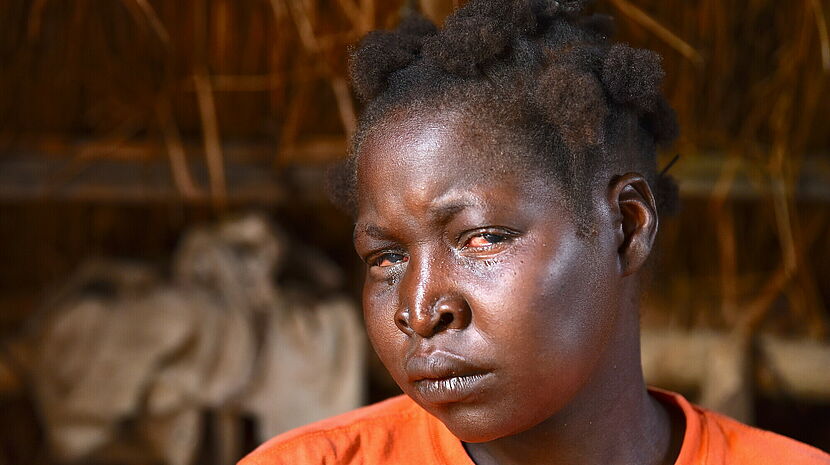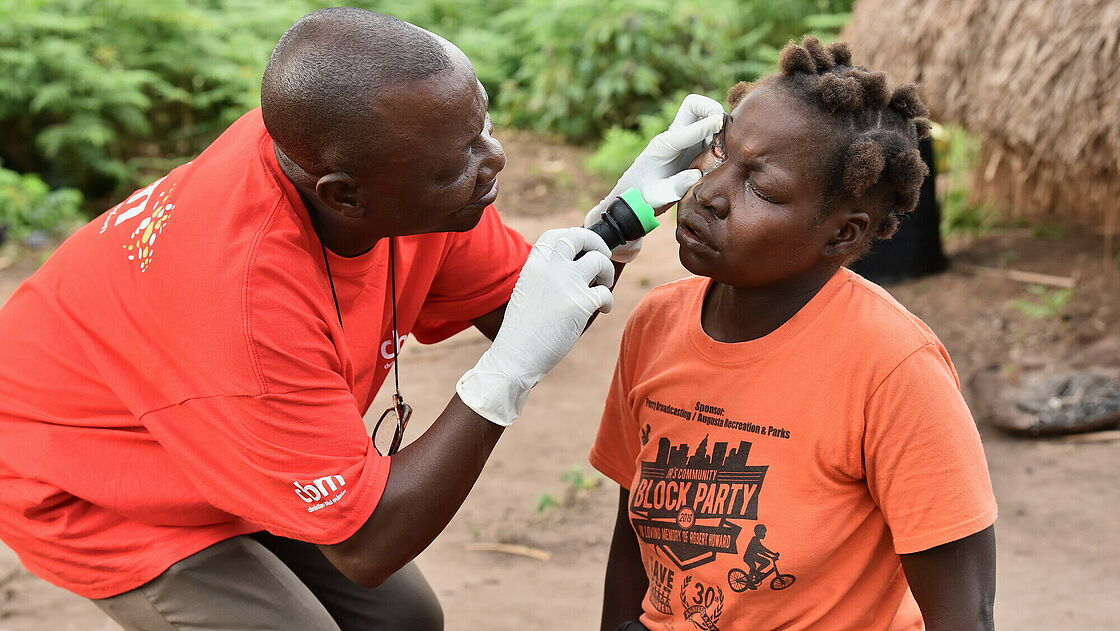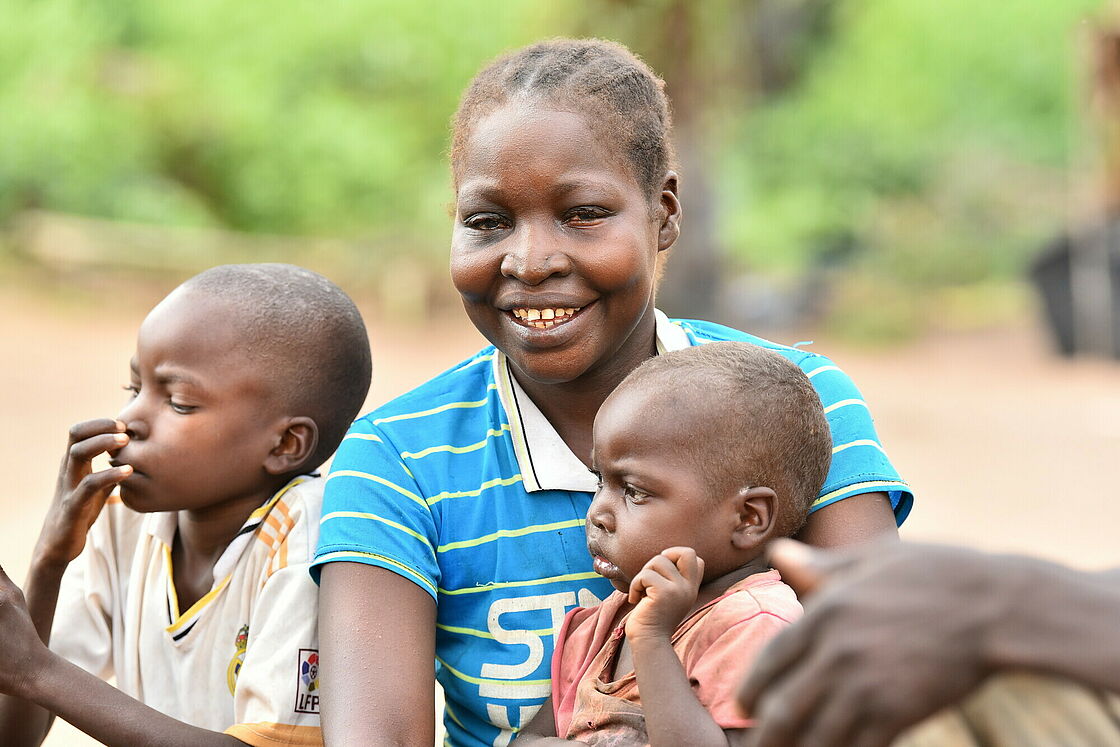CBM-funded Interventions Contributed to the Decline:
Trachoma Risk Drops Globally

©CBM
The WHO reports a remarkable decline in global Trachoma risk to 115.7 million, with CBM interventions contributing significantly to this decline. By 2022, 17 countries such as Vanuatu in Oceania and Malawi in Africa have eradicated trachoma as a public health problem, while 5 others are close to certification.
The World Health Organisation (WHO) has reported a decline in the number of people at risk of Trachoma, a blinding eye disease, from 125 million in 2022 to 115.7 million.
A new progress report on the elimination of Trachoma in 2022 also confirms that 17 countries (Benin, Cambodia, China, Gambia, Ghana, Islamic Republic of Iran, Lao People’s Democratic Republic, Malawi, Mali, Mexico, Morocco, Myanmar, Nepal, Oman, Saudi Arabia, Togo and Vanuatu) have eliminated Trachoma as a public health problem.
Another 5 countries (Botswana, Burundi, Iraq, Mauritania, and Tunisia) report that they have achieved prevalence elimination targets and will soon be certified by WHO.
Much of this progress is attributed to to collaborative efforts between national governments, implementing partners and donors.
What is Trachoma?
Trachoma is one of the 20 Neglected Tropical Diseases (NTDs) defined by WHO, affecting the world’s poorest people. It is caused by the bacterium Chlamydia Trachomatis. The bacteria are spread through human contact and eye-seeking flies. They thrive in poor sanitation and hygiene conditions with limited access to water. Repeated infection damages the eyelids, causing the eyelashes to turn inwards and rub against the eyeball. If left untreated, this extremely painful and disabling advanced stage of the disease, called Trachomatous Trichiasis (TT), leads to irreversible low vision and blindness.
The impact of blinding Trachoma

Pasi is a smallholder farmer in Northern Congo suffers from trachoma trichiasis.
©CBM
In the Democratic Republic of Congo (DRC), the disease is a common public health concern and threat to livelihoods and community well-being.
Pasi Weke, a smallholder farmer in the DRC, suffered the unbearable pain of Trachoma Trichiasis (TT) when it reached a stage where every blink became agonising pain. As a smallholder farmer, Pasi's survival depended on her ability to work in the fields - a task made nearly impossible by the progressive deterioration of her vision and the constant pain. Once an active member of her community, Pasi's condition forced her into a life of isolation and economic hardship.
“I woke up every day with bearable pain, but when the sun came up, the pain became unbearable.”
The declining yield from the fields and the inability to carry out her trade in palm oil strained the family's already meagre resources. With her husband often away, Pasi endured the agony of Trachoma, all the while fearing that her four young children would one day suffer the same fate.
“When my eye problems begun, I went to the hospital to get them checked. I was given medication. But after some time, the pain came back. I feared that if my eyes were not treated, I could go completely blind.”
Blindness and painful chronic disabilities from Trachoma mostly affect adults and especially women of working age, hindering their ability to work and provide for themselves and their families. It is estimated that the disease causes a loss of productivity of USD 2.9 billion per year worldwide.
The SAFE Approach

A happy Pasi after surgery - together with her children.
©CBM
CBM-funded surgeries have changed the lives of people like Pasi. Her experience underscores the importance of health support for persons with disabilities and those at risk.
Pasi was identified through a CBM-funded campaign targeting people suffering from Trachomatous Trichiasis (TT). Mara, a community health worker, made the diagnosis and arranged for a free TT surgery in early 2023. This not only relieved Pasi's pain, but also saved her from possible blindness.
“I could not see my children clearly and how they were growing up, but after the surgery I can now see them and I am thrilled with how grown up they look. I can now go back to my farm and provide for them."
In addition to surgical interventions, CBM aligns its Trachoma approach with national governments’ disease elimination strategies and WHO's comprehensive SAFE strategy.
In 2022 alone;
- 4.6 million people were treated for Trachoma with the antibiotic Azithromycin.
- CBM supported 16,487 trichiasis surgeries to prevent blindness.
- 29,888 people participated in awareness campaigns for hygiene to protect against NTDs.
CBM emphasises the importance of accessible facial cleanliness and environmental interventions, including the provision of clean water and toilets. CBM’s WASH approach is particularly important in countries like Ethiopia, which carries about 52% of the world's trachoma burden.
While global efforts continue, the Roadmap for Neglected Tropical Diseases (2021–2030) from WHO emphasises the importance of holistic, integrated efforts over disease-specific interventions. The focus is now on national, sustainable strategies rather than solely donor-driven programmes. CBM will continue to work with national governments and implementing partners to strengthen and empower local health system capacities.